Edgworth Home / Crowthorn School, Bolton, Lancashire
The National Children's Home 'farm colony' at Edgworth, near Bolton, began life in 1871 with the donation to the charity of seventy acres of remote moorland and a public house by Mr James Barlow. Barlow, a wealthy Lancashire manufacturer, devoted Methodist and temperance reformer had bought the pub, the Wheatsheaf, purely so that he could close it down. However, being acquainted with Thomas Bowman Stephenson and his work with boys in the slums of London, he decided that the moorland setting would provide an ideal alternative in the form of fresh air, country living and outdoor manual labour.
The first governor of the home was Alfred Mager, a London bank cashier by profession and one of the co-founders of the original Children's Home in Lambeth. Despite having no experience of matters such as farming, building or drainage, Mager agreed to take on the post and in April 1872 arrived at the Wheatsheaf with his wife and the first party of children — twenty-four boys and four girls. Their task was to become the founding nucleus of the home and to form a major part of the workforce that would turn the site into a complete children's village with houses, schools, bakery, laundry, cottage hospital and so on.
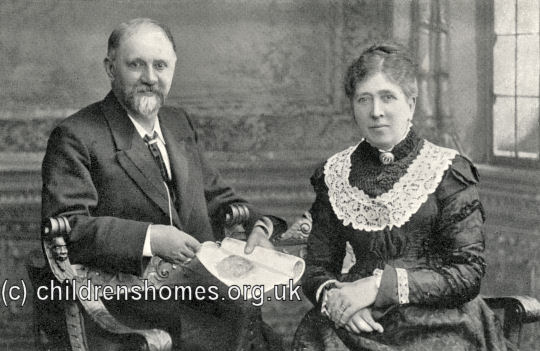
Mr and Mrs Mager, Edgworth Home, Bolton © Peter Higginbotham
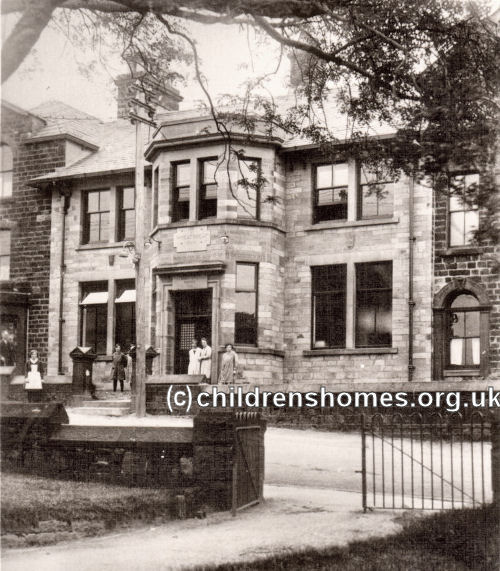
The Wheatsheaf after conversion, Edgworth Home, Bolton © Peter Higginbotham
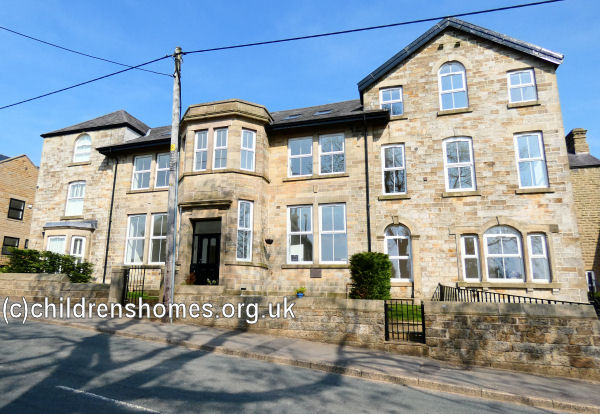
The Wheatsheaf, Edgworth, 2018. © Peter Higginbotham
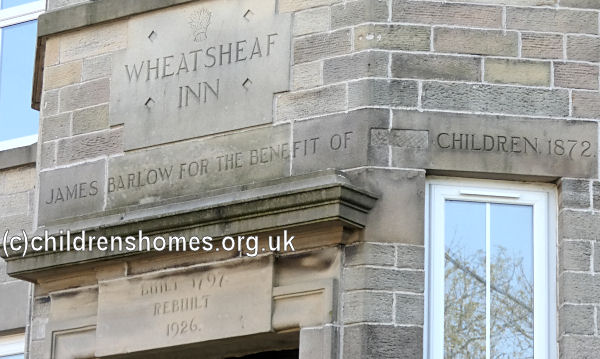
The Wheatsheaf, Edgworth, 2018. © Peter Higginbotham
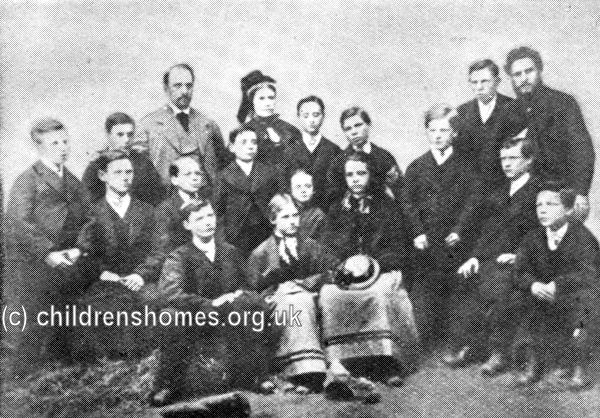
The first residents at Edgworth, c.1872. © Peter Higginbotham
For these early pioneers, though, conditions were rough — there was 'dirt and desolation; barren bog and dreary moss, stretching out before our gaw.'. They slept on straw and all hot water for cooking and washing had to be boiled on a small 'American stove'. During the Magers' first absence, the boys mutinied and went on the rampage. Mr Mager was alerted and returned at once. The boys were locked out and in the evening, when a thunderstorm broke, begged to be admitted. The ringleaders were thrashed and all thoughts of rebellion subdued.
Much of the early work needed was the construction of roads and drains and roadways. In later, a reservoir was constructed to provide a reliable water supply for the home.
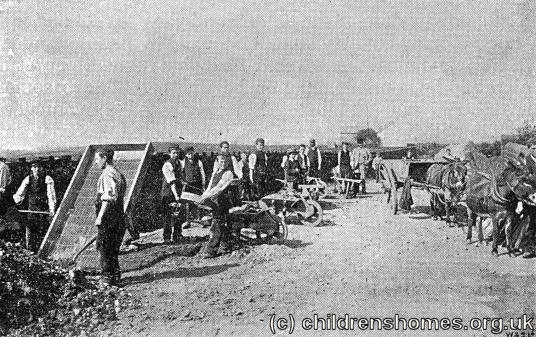
Road making at Edgworth Home, Bolton. © Peter Higginbotham
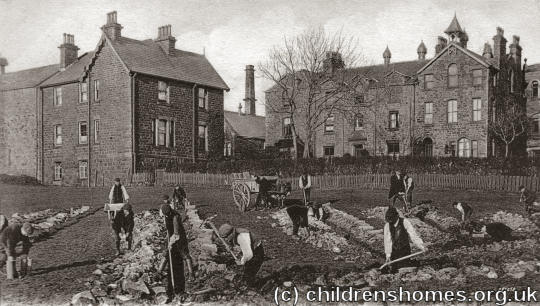
Drain digging at Edgworth Home, Bolton. © Peter Higginbotham
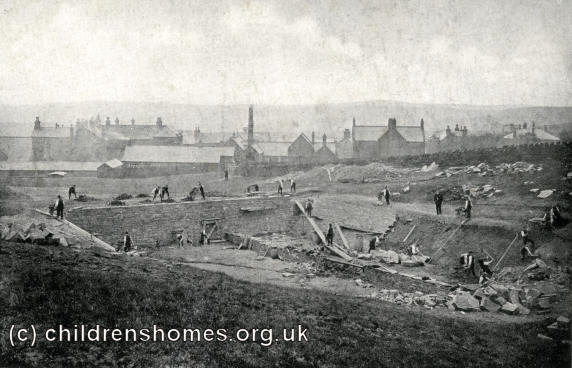
Reservoir construction at Edgworth Home, Bolton. © Peter Higginbotham
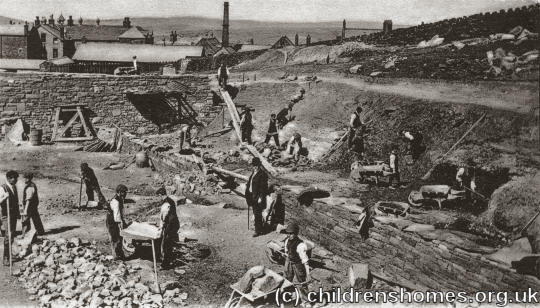
Reservoir construction at Edgworth Home, Bolton. © Peter Higginbotham
The stone for construction work was extracted by the boys themselves from a local quarry at the east of the home.
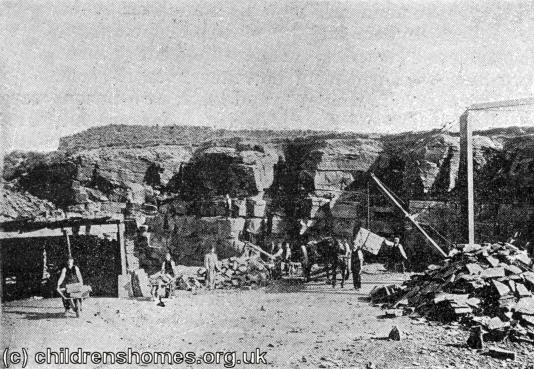
Stone quarrying at Edgworth Home, Bolton, c.1900. © Peter Higginbotham
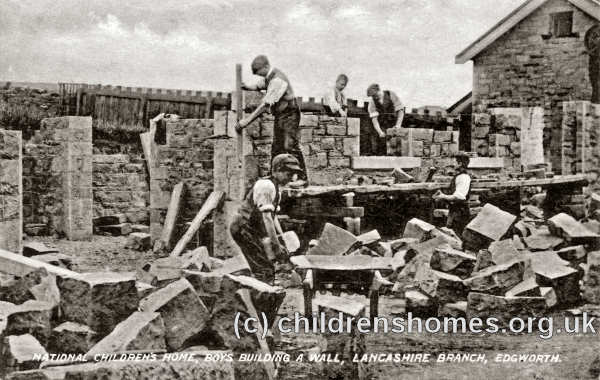
Building work at Edgworth Home, Bolton, c.1900. © Peter Higginbotham
The Wheatsheaf became the central building of the village and was adjoined on each side by houses known as Woodville (at the north) and Bolton (at the south). These three houses accommodated only boys. The south side was further extended with the addition of the South Australian Wing and the Atkinson Hall, used as the boys' dining-hall and for community social events.
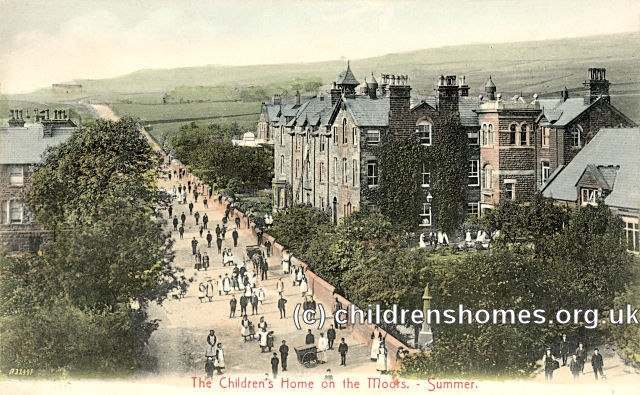
Main street (Wheatsheaf block at centre) at Edgworth Home, Bolton. © Peter Higginbotham
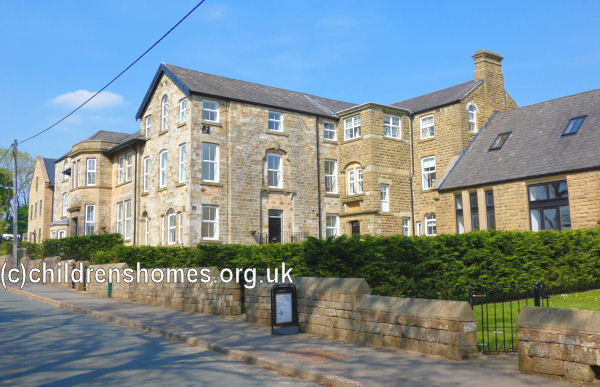
Edgworth, 2018. © Peter Higginbotham
A residence for the governor was built at the opposite side of the road. It was enlarged in 1928.
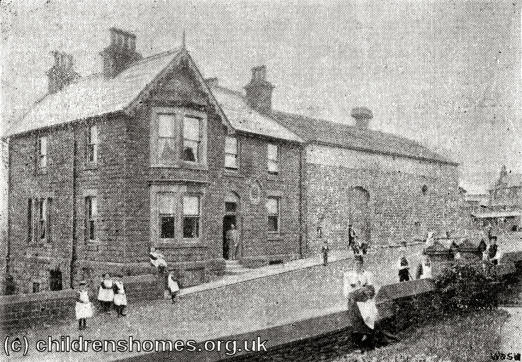
Governor's house at Edgworth Home, Bolton. © Peter Higginbotham

Governor's house at Edgworth, 2018. © Peter Higginbotham
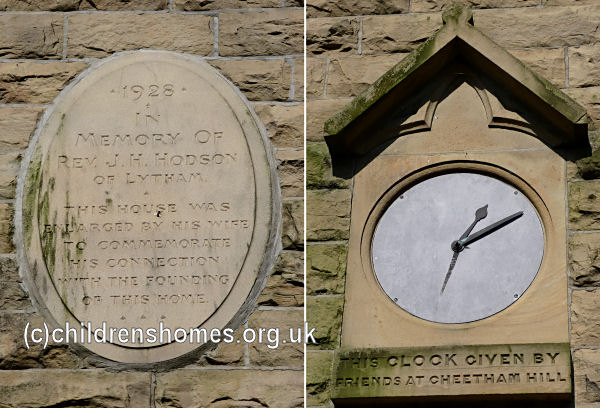
Governor's house at Edgworth, 2018. © Peter Higginbotham
The children's accommodation was organised as family-group houses each with around sixteen boys or girls under the supervision of a 'Sister'. Many of the houses were named after those whose donations had financed their construction. There were eventually around twenty children's houses, with the total number of children in residence reaching more than three hundred.
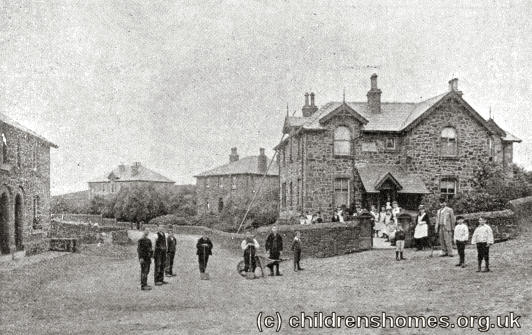
Greengate (far left), Sanderson, Ministers' Children's Gift and Moscrop Houses, Edgworth Home, Bolton, c.1900. © Peter Higginbotham
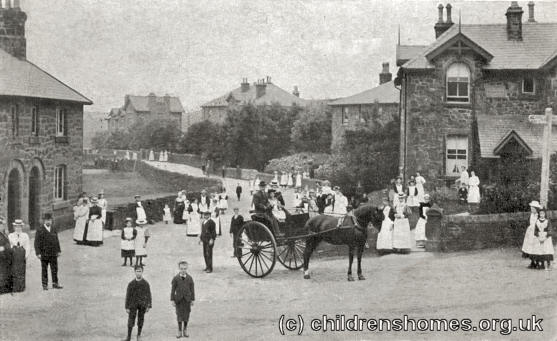
Greengate (far left), Beckett, Sanderson, Ministers' Children's Gift and Moscrop Houses, Edgworth Home, Bolton, c.1900. © Peter Higginbotham
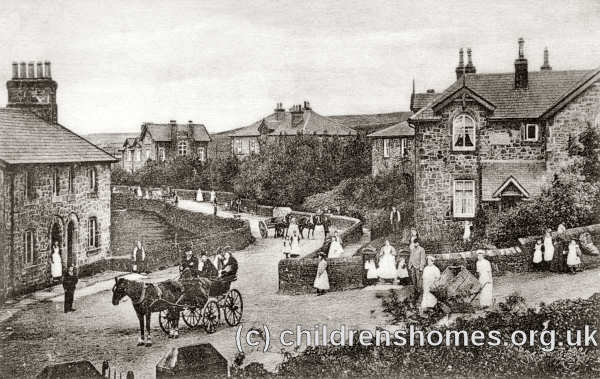
Greengate (far left), Beckett, Sanderson, Ministers' Children's Gift and Moscrop Houses, Edgworth Home, Bolton, c.1900. © Peter Higginbotham
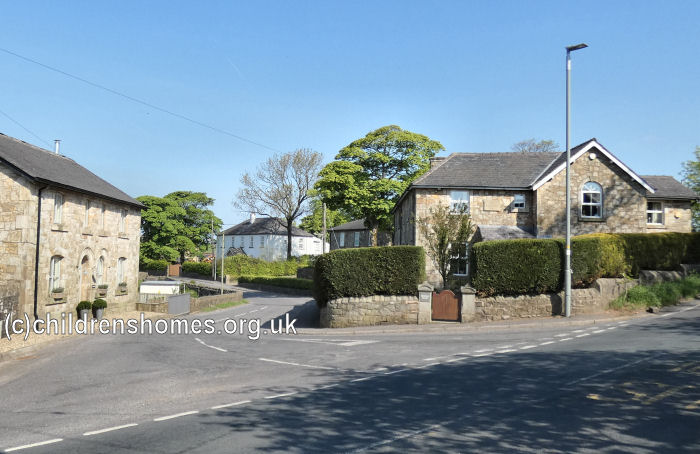
Edgworth, 2018. © Peter Higginbotham
A school room was erected at the southern end of the 'village' and also a cottage hospital.
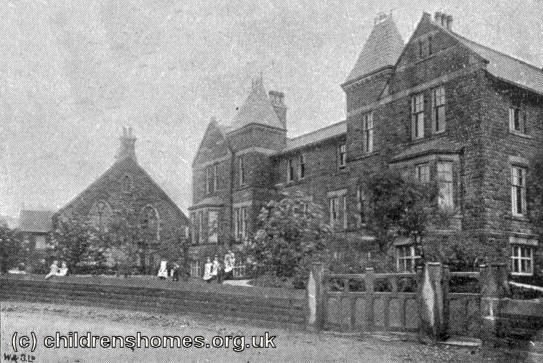
School room (left), Howarth and Jubilee Houses, Edgworth Home, Bolton, c.1900. © Peter Higginbotham
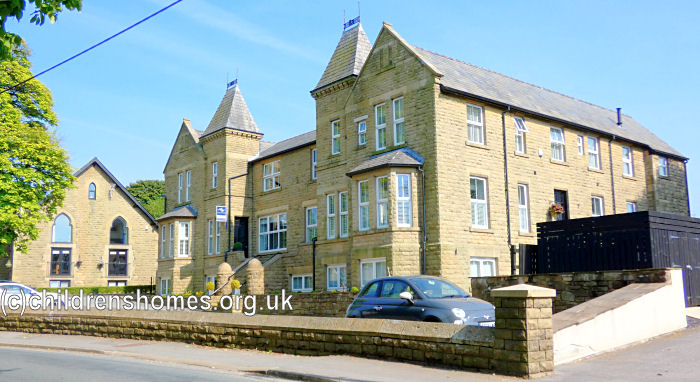
School room (left), Howarth and Jubilee Houses, Edgworth. © Peter Higginbotham
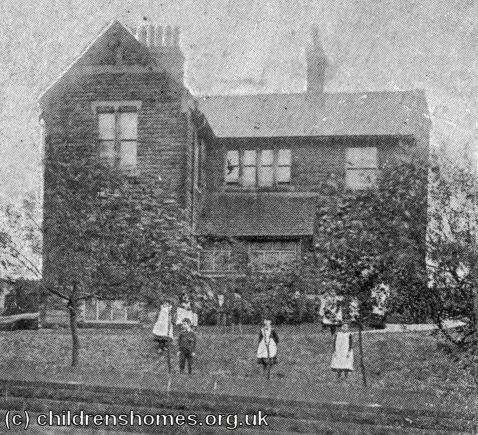
Cottage hospital, Edgworth Home, Bolton, c.1900. © Peter Higginbotham
The Edgworth site is shown on the 1929 map below.
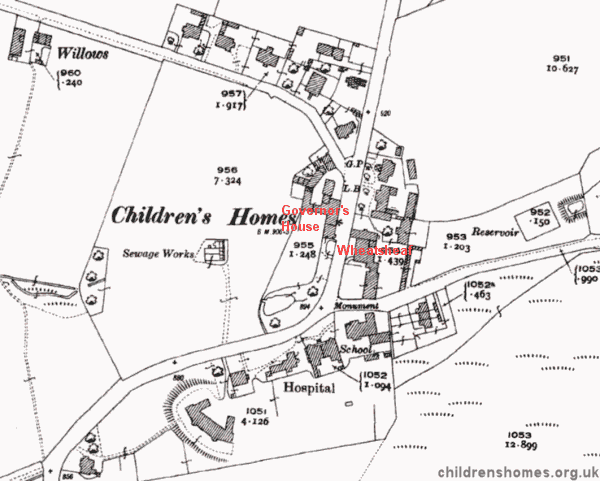
Edgworth site, c.1929.
The children at Edgworth were taught practical skills that both contributed to the needs and economy of the home and that would also make them employable in future life, either in this country or after emigration to Canada or Australia. Much of this activity took place in the Barlow Memorial Buildings, located to the north of the Wheatsheaf block. The facilities provided here included a swimming bath, carpenter's shop, blacksmith's forge, shoemaker's shop, model dairy, knitting factory, and a greenhouse in which flowers were produced for sale.
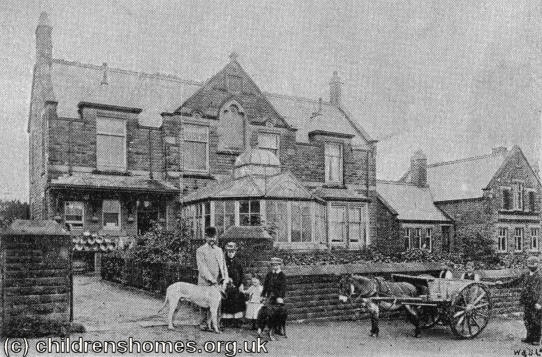
Barlow Memorial Building, Edgworth Home, Bolton. © Peter Higginbotham
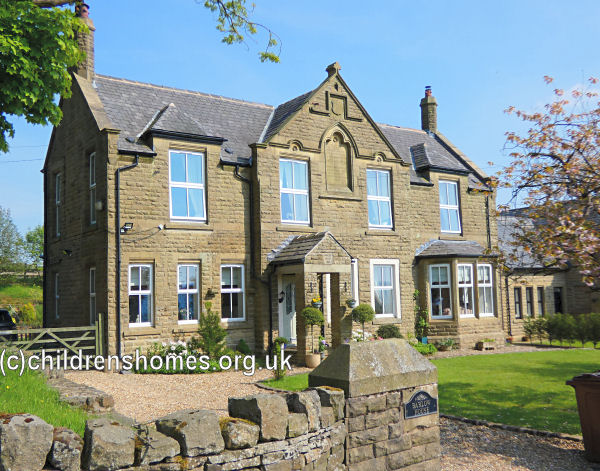
Barlow Memorial Building, Edgworth, 2018. © Peter Higginbotham
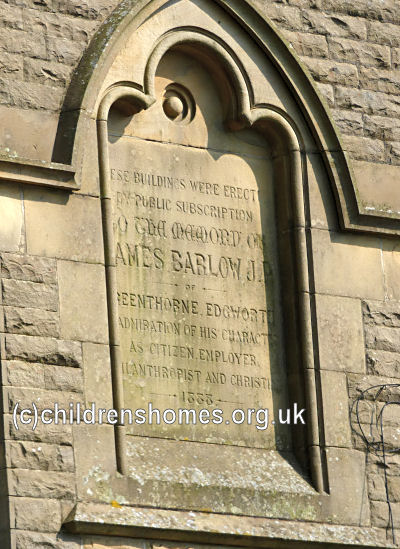
Barlow Memorial Building, Edgworth, 2018. © Peter Higginbotham
The occupations carried out by the girls included laundry and kitchen work, and sewing and knitting.
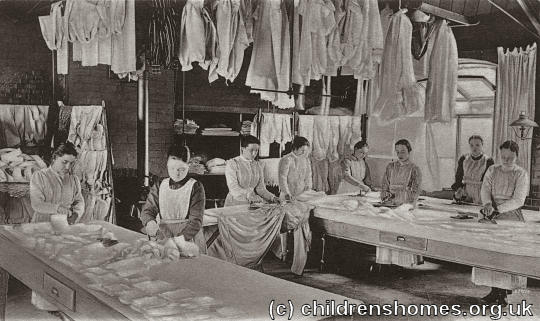
Girls working in the laundry, Edgworth Home, Bolton, c.1910. © Peter Higginbotham
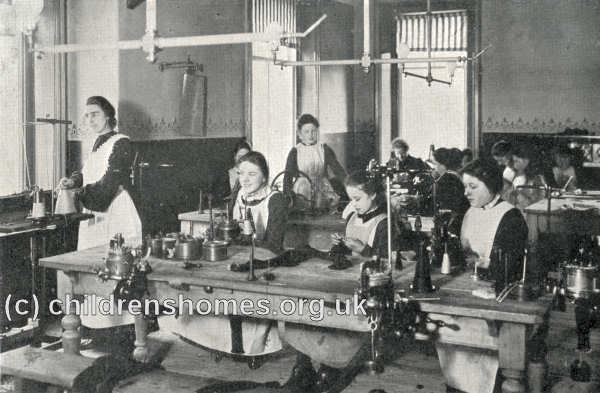
Knitting room, Edgworth Home, Bolton, c.1910. © Peter Higginbotham
In the well equipped model dairy, milk from the home's own cows was processed, with sales of cream and butter producing a useful income.
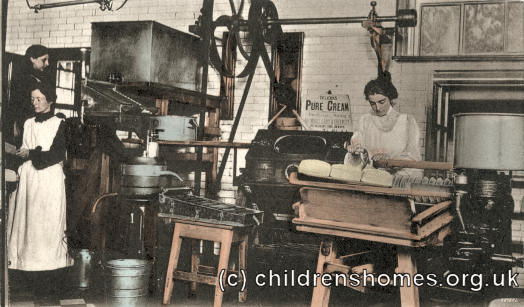
Model dairy, Edgworth Home, Bolton, c.1910. © Peter Higginbotham
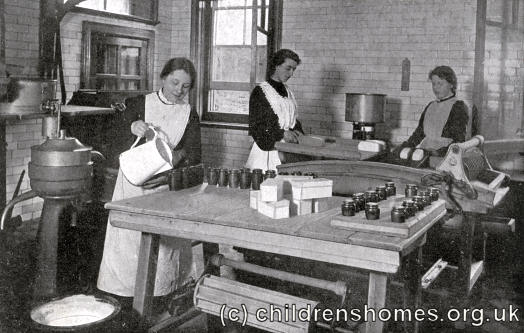
Model dairy, Edgworth Home, Bolton, c.1910. © Peter Higginbotham
In the boys' training department, a model bakery produced all the bread required at the Home.
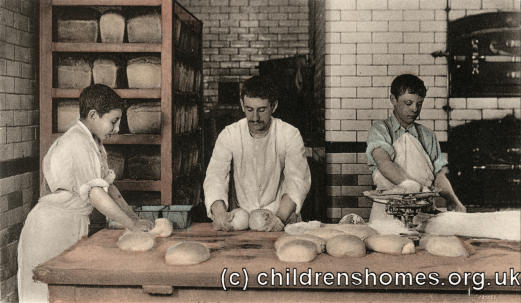
Model bakery, Edgworth Home, Bolton, c.1910. © Peter Higginbotham
Among the crafts learned by the boys was the making of clogs.
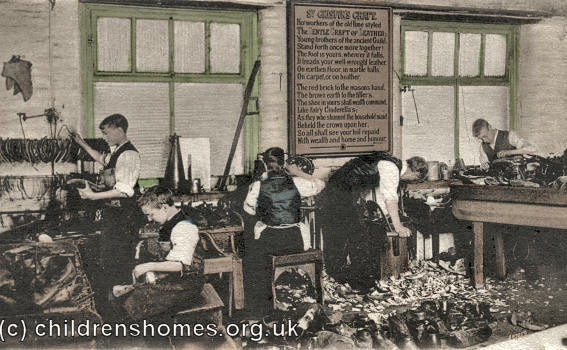
Boys making clogs, Edgworth Home, Bolton, c.1910. © Peter Higginbotham
The principle outdoor occupation in which the boys received training was in agricultural work on the home's farmland. This included the keeping of cows and horses and the growing and harvesting of hay.
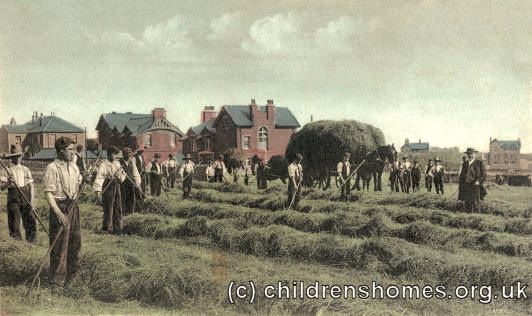
Boys cutting hay, Edgworth Home, Bolton, c.1910. © Peter Higginbotham
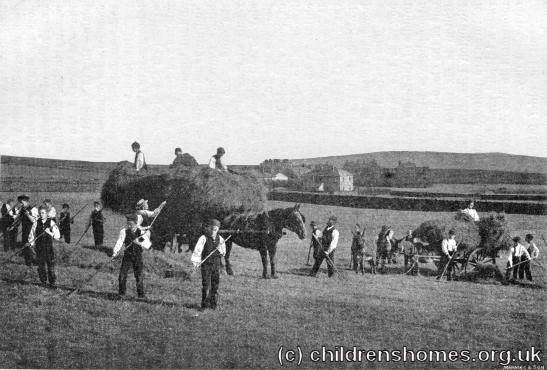
Boys collecting hay, Edgworth Home, Bolton, c.1900. © Peter Higginbotham
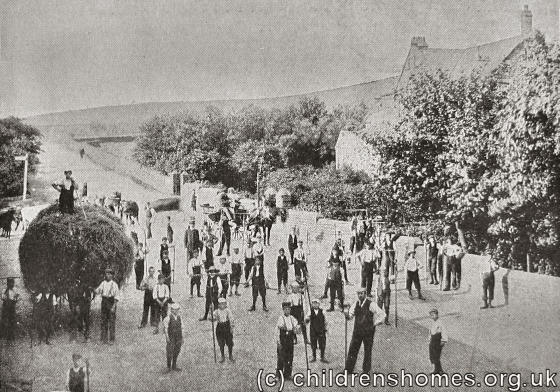
The last load of hay, Edgworth Home, Bolton, c.1900. © Peter Higginbotham
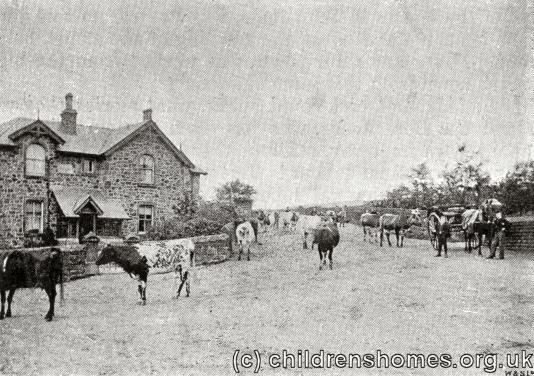
Cows coming home for milking, Edgworth Home, Bolton, c.1900. © Peter Higginbotham
Like a number of NCH homes, a party of Edgworth children emigrated to Canada each year.
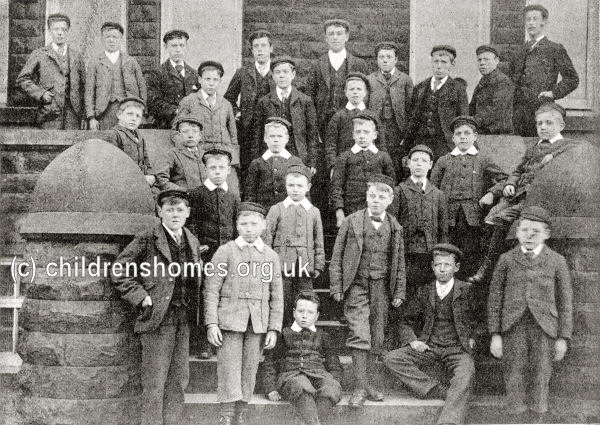
The 1899 emigration Canadian emigration party from Edgworth. © Peter Higginbotham
On Moorside Road, a little way from the main part of the home, was the Watson Holiday House — used to provide breaks for poor children from manufacturing towns in the area.
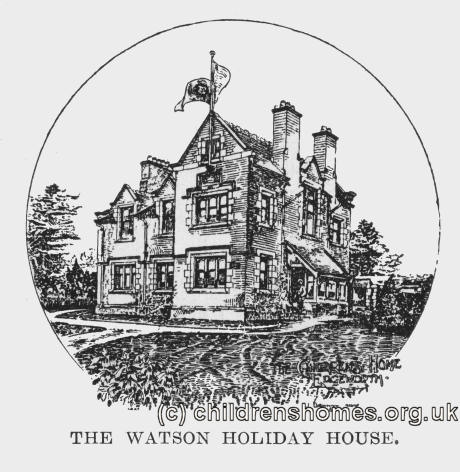
Watson Holiday House, Edgworth Home, Bolton, c.1890. © Peter Higginbotham
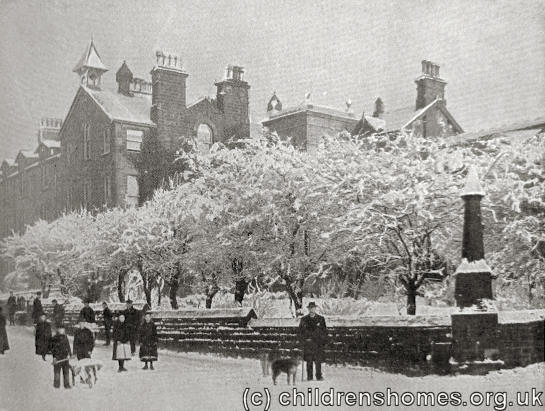
Winter scene, Edgworth Home, Bolton, early 1900s. © Peter Higginbotham
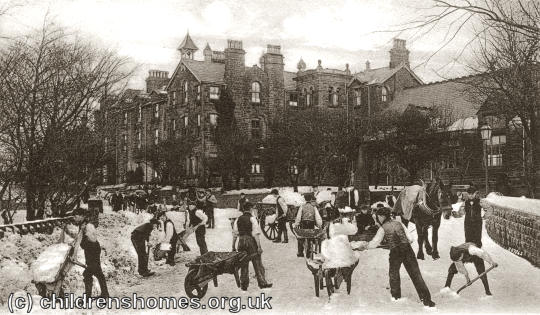
Snow clearing, Edgworth Home, Bolton, early 1900s. © Peter Higginbotham
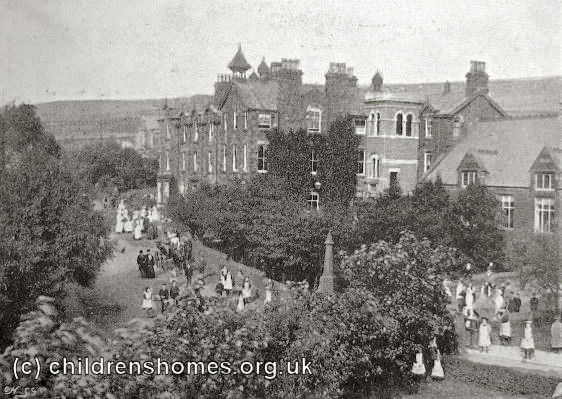
Summer scene, Edgworth Home, Bolton, early 1900s. © Peter Higginbotham
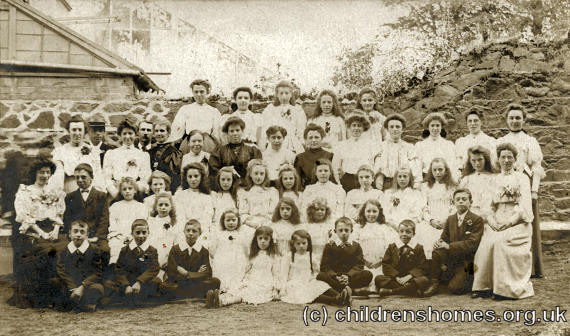
A group of the residents, Edgworth Home, Bolton, early 1900s. © Peter Higginbotham
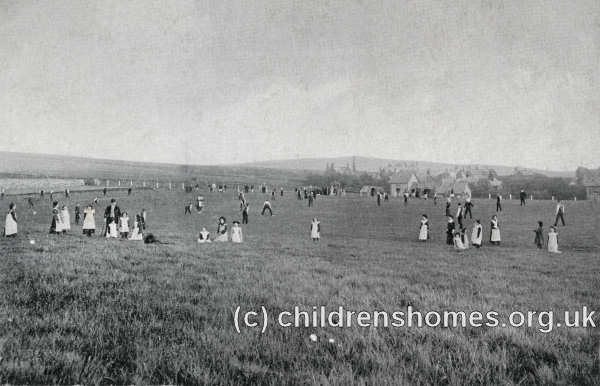
Recreation field, Edgworth Home, Bolton, early 1900s. © Peter Higginbotham
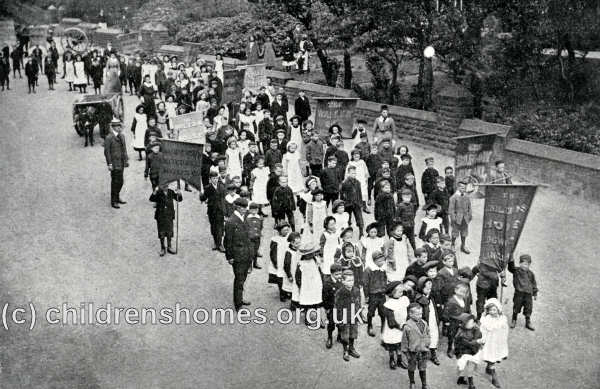
Children's parade, Edgworth Home, Bolton, early 1900s. © Peter Higginbotham
Edgworth's first governor, Alfred Mager continued in the post until his retirement in 1907. He was succeeded by Harry Wadhams (1907-35), Edward Shutt (1935-42), Clifford Brooke (1942-47), F.J. Milverton (1947-56) and Arthur Sadler (1956-).
Following the death of James Barlow in 1923, the Wheatsheaf building was renovated and a memorial was created in the form of a new pair of homes, which were erected at the south-west of the village. The one farther from the road was dedicated to James Barlow, and the nearer one to his grand-daughter, Alice, who had died in 1919.
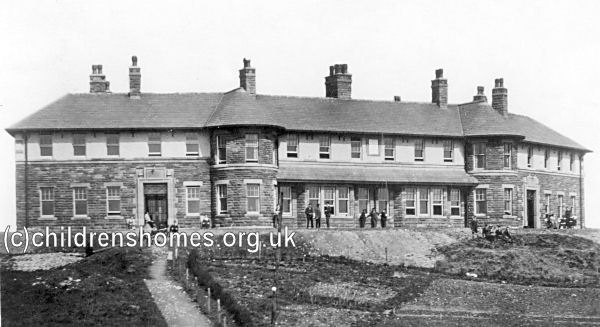
Barlow Memorial Homes, c.1926. © Peter Higginbotham
In 1953, Edgworth changed its role and became Crowthorn School, a residential school for children with special needs.
The school closed in 2002 and the site was sold. Many of the old buildings still exist, mostly now in private residential use.
Records
Note: many repositories impose a closure period of up to 100 years for records identifying individuals. Before travelling a long distance, always check that the records you want to consult will be available.
- Action For Children (formerly the National Children's Home). Can provide access to their own records for individuals who were adopted through the charity or who resided in one of its homes. Help also for those searching for family history information.
Census
Bibliography
- Barritt, Gordon E. The Edgworth Story (1972, National Children's Home)
- Bradfield, William The Life of the Reverend Thomas Bowman Stephenson (1913, Kelly)
- Curnock, Nehemiah The Story of the Children's Home (C.H. Kelly, 1901)
- Higginbotham, Peter Children's Homes: A History of Institutional Care for Britain's Young (2017, Pen & Sword)
- Horner, Francis Shadow and Sun (Epworth Press, 1920)
- Howard, Philip J Philip: a Strange Child (Dalkeith Publishing, 2007)
- Philpot, Terry Action For Children (Lion, 1994)
- Walpole, Cecil F. Golden Links (Epworth Press, 1941)
Links
- Action For Children.
- Their History — a website on the homes by a former resident.
- Growing up in the NCH — a forum for those who spent time in NCH homes.
Films
- Scenes from various NCH Homes — 1960s film footage.
- NCH Documentary (1954) Part 1 — Arriving at Harpenden.
- NCH Documentary (1954) Part 2 — Harpenden Oval.
- NCH Documentary (1954) Part 3 — Annual Convocation, Alverstoke
- NCH Documentary (1954) Part 4 — Special facilities at Danesford, Chipping Norton, Harpenden and Frodsham.
- NCH Documentary (1954) Part 5 — Founders Day at Princess Alice Orphanage; training at Harpenden.
- NCH Documentary (1954) Part 6 — Harpenden.
- NCH Documentray (1964) Part 1 — Disabled and special needs at Harpenden and Chipping Norton
- NCH Documentary (1964) Part 2 — Disabled and special needs children at Harpenden, Edgworth, Chipping Norton.
- NCH Documentary (1964) Part 3 — Harpenden, Edgworth, Chipping Norton.
- NCH Documentary (1964) Part 4 — Alverstoke.
- NCH Documentary (1964) Part 5 — Alverstoke.
- NCH Documentary (1964) Part 6 — Alverstoke.
- NCH Frodsham (1960s) Part 1
- NCH Frodsham (1960s) Part 2
- NCH Brackley (1960s)
- Danesford School (1960s)
Except where indicated, this page () © Peter Higginbotham. Contents may not be reproduced without permission.


